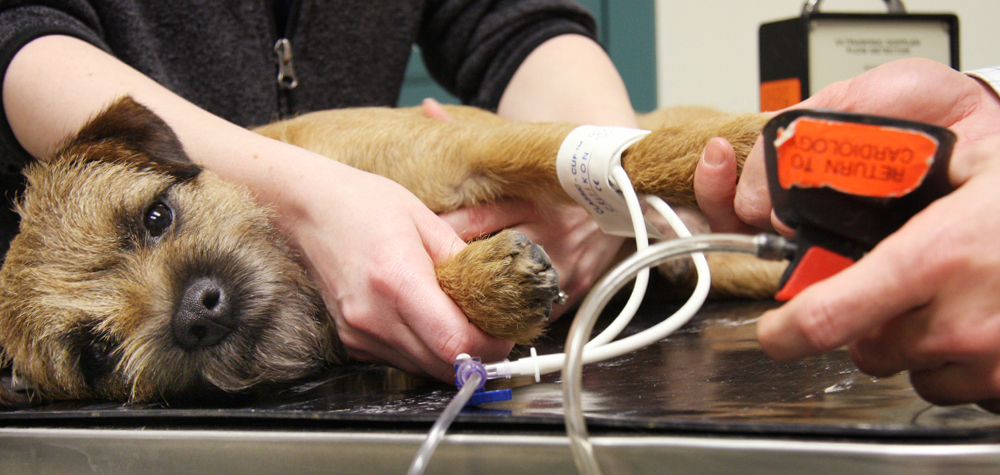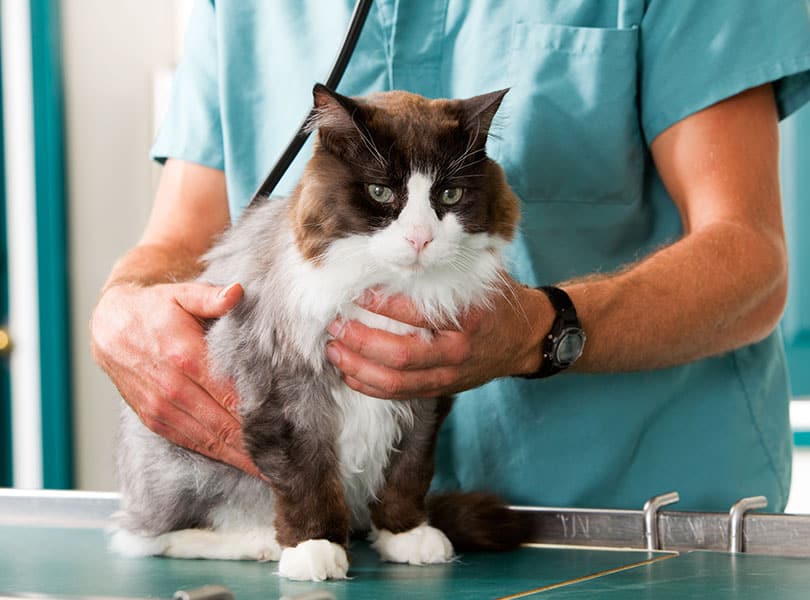What Vets Look For During an Ultrasound For Dogs Exam}
Wiki Article
The Duty of Ultrasound and CT Scan in Modern Vet Practices: Insights From Experienced Professionals
In contemporary vet methods, ultrasound and CT scans considerably enhance analysis capacities. These imaging techniques offer crucial understandings into animal health and wellness, directing therapy decisions. Experienced experts recognize the one-of-a-kind advantages of each method. Ultrasound supplies real-time evaluations, while CT checks provide elaborate physiological details. Comprehending their applications and roles increases important concerns concerning their impact on person outcomes and the future of vet diagnostics. What insights can be gotten from their combined usage?Comprehending Ultrasound in Veterinary Medicine
Ultrasound is an important analysis tool in vet medication, providing a non-invasive technique to picture interior structures. This imaging method employs high-frequency acoustic waves to develop real-time photos of cells and body organs, allowing vets to assess conditions without surgical intervention. Common applications include assessing the heart, liver, kidneys, and reproductive organs, in addition to keeping an eye on pregnancies.The treatment is fairly quick and can be executed in different settings, making it an easily accessible choice for vets. Unlike radiography, ultrasound supplies thorough information concerning soft cells and blood circulation, which is essential for exact diagnoses.Veterinary professionals count on ultrasound to discover abnormalities such as tumors, cysts, and liquid buildup. Its capacity to assist biopsies and various other treatments further enhances its energy in medical method. By using a risk-free and effective means to take a look at internal composition, ultrasound has actually become a cornerstone of modern-day vet diagnostics.
The Advantages of CT Scans for Pet Diagnostics
CT scans deal considerable advantages in vet diagnostics by offering boosted precision in recognizing interior problems (Cancer Veterinary Near Me). As a non-invasive imaging strategy, they ensure the safety and convenience of animals throughout examinations. On top of that, CT scans facilitate a complete analysis of interior structures, permitting more efficient therapy preparationEnhanced Diagnostic Accuracy
Developments in imaging modern technology have greatly improved diagnostic precision in veterinary medication, particularly with making use of CT scans. These scans provide detailed cross-sectional pictures of an animal's inner frameworks, permitting vets to recognize irregularities with accuracy. The high resolution and three-dimensional capabilities of CT imaging help with the detection of conditions such as lumps, fractures, and interior blood loss that could be missed with typical imaging techniques. Furthermore, CT scans can aid in pre-surgical preparation by providing a comprehensive sight of physiological connections. This level of information not only boosts the accuracy of medical diagnoses yet likewise aids in customizing effective treatment strategies. As a result, the integration of CT technology into veterinary practices is transforming the landscape of animal healthcare, boosting end results for clients.Non-Invasive Imaging Technique
The introduction of non-invasive imaging strategies has transformed pet diagnostics, with CT scans emerging as a famous tool in vet practices. These scans provide high-resolution, cross-sectional photos of a pet's interior frameworks, permitting vets to examine intricate conditions without the demand for intrusive treatments. The benefits of CT scans include their capacity to find growths, fractures, and inner blood loss with remarkable accuracy. In addition, they help with the analysis of soft cells and organs, enhancing diagnostic abilities. The rate of CT scanning makes it possible for fast decision-making, which is essential in emergency scenarios. By lessening stress and anxiety and pain for the animal, CT scans add to a much more humane strategy to diagnostics, ultimately boosting therapy end results and progressing vet treatment.Comprehensive Internal Analysis
A complete internal assessment is essential for precise diagnosis and efficient therapy in vet medication. CT checks deal significant advantages in this regard, offering comprehensive cross-sectional photos of an animal's inner frameworks. This innovative imaging method boosts visualization of intricate anatomical areas, making it possible for veterinarians to identify abnormalities such as lumps, cracks, and internal blood loss with greater accuracy. Furthermore, CT checks promote the analysis of problems that may be challenging to diagnose through standard methods. The rate and accuracy of CT imaging likewise add to timely treatments, boosting person outcomes. As veterinary practices increasingly integrate CT innovation, the advantages of comprehensive internal assessments come to be obvious, enhancing the significance of this device in contemporary vet diagnostics.Comparing Ultrasound and CT Imaging Techniques
While both ultrasound and CT imaging serve necessary duties in vet diagnostics, each strategy supplies unique benefits and restrictions that can affect scientific decision-making. Ultrasound is particularly valued for its real-time imaging capabilities, permitting vets to observe dynamic physical procedures. This technique is non-invasive, portable, and does not include ionizing radiation, making it a safer alternative for both medical professionals and animals. Nonetheless, ultrasound might have constraints in imagining specific physiological frameworks or deep tissues.Conversely, CT imaging gives detailed cross-sectional sights of the body, enabling exact localization of irregularities. It succeeds in examining complex organs and structures, especially in the thorax and abdomen. CT scans need sedation or anesthesia in many CT Scans For Animals situations and entail exposure to ionizing radiation. Ultimately, the selection between ultrasound and CT depends upon the certain scientific circumstance, the location of interest, and the necessity of the diagnostic demands.Instance Researches: Effective Diagnoses Through Imaging
Study highlight the significant renovations in diagnostic accuracy accomplished with sophisticated imaging modern technologies like ultrasound and CT scans in veterinary methods. These developments not just improve the detection of numerous conditions yet likewise assist in effective and timely treatment plans. Analyzing certain situations can highlight the transformative effect of these imaging methods on veterinary medication.Diagnostic Accuracy Improvements

Imaging Technology Advancements
As veterinary imaging innovation remains to advance, its impact on diagnostic abilities ends up being increasingly apparent. Recent case researches highlight the successful application of sophisticated ultrasound and CT check methods in identifying intricate conditions. A veterinary center made use of high-resolution CT scans to diagnose an unusual form of lung cancer cells in a dog, which standard imaging had missed out on. Similarly, an ultrasound assessment revealed an abdominal mass in a cat, prompting prompt medical intervention and a favorable result. These innovations not just improve analysis precision but also enable veterinarians to develop targeted therapy plans. By leveraging innovative imaging modern technologies, vet professionals are considerably enhancing patient treatment, causing extra effective management of different health and wellness conditions in pets.
The Function of Imaging in Emergency Situation Vet Care
Imaging plays a crucial duty in emergency veterinary treatment, supplying vets with important details needed to make fast, educated choices. In immediate situations, techniques like ultrasound and CT scans enable professionals to swiftly analyze a pet's interior frameworks, recognizing important conditions such as inner blood loss, fractures, or body organ problems. These imaging methods allow for real-time assessments, facilitating timely treatments that can be life-saving. For circumstances, ultrasound is vital for reviewing soft cells injuries and conditions like liquid buildup, while CT scans offer comprehensive pictures of intricate anatomical structures, vital for diagnosing trauma situations. The rate and accuracy of these imaging methods enhance the veterinarian's capacity to design reliable therapy strategies, guaranteeing the most effective possible results for their patients. Consequently, the integration of sophisticated imaging modern technologies into emergency vet practices is not only beneficial however significantly required, as it enhances analysis capabilities and improves overall pet treatment during defining moments.Training and Expertise in Vet Imaging
Although advanced imaging strategies such as ultrasound and CT scans are vital for reliable vet treatment, the successful application of these technologies heavily relies on the training and know-how of veterinary specialists. Proficient use imaging devices needs detailed knowledge of anatomy, pathology, and the concepts underlying each technique. Vet professionals must go through customized training to properly translate imaging outcomes, which is crucial for identifying conditions and planning treatment.Certifications and proceeding education in veterinary imaging boost the skills of practitioners, allowing them to stay updated with technological developments. Collaboration between radiologists and vets usually results in improved diagnostic accuracy, as professionals can offer insights right into complicated situations. Furthermore, useful experience in dealing with imaging devices promotes self-confidence in its application. Inevitably, the high quality of vet imaging services is straight correlated to the degree of training and experience had by the professionals making use of these vital diagnostic devices.Future Fads in Diagnostic Imaging for Animals
With the quick developments in modern technology, veterinary analysis imaging is positioned for substantial development in the coming years. Arising patterns indicate a change towards more portable and obtainable imaging methods, such as portable ultrasound gadgets, which could improve field diagnostics. Additionally, the combination of man-made intelligence is anticipated to transform image analysis, enabling quicker and a lot more exact interpretations of results.Moreover, improvements in 3D imaging strategies and calculated tomography will offer vets with more extensive sights of animal anatomy, bring about enhanced treatment plans. Digital truth innovation may additionally play a duty in medical planning and education and learning, giving veterinarians a special point of view on complicated cases.As telemedicine remains to grow, remote examinations helped with by diagnostic imaging will certainly end up being more typical, allowing specialists to aid basic practitioners in real-time. Overall, these fads are readied to boost the effectiveness and effectiveness of vet care, ultimately enhancing pet outcomes.Regularly Asked Questions
How Much Do Ultrasound and CT Checks Expense in Veterinary Facilities?
The expenses of ultrasound and CT scans in veterinary facilities commonly range from $300 to $1,500, relying on factors such as place, clinic type, and particular treatments required for the pet's diagnosis and therapy.
Exist Any Kind Of Threats Connected With Ultrasound and CT Scans for Animals?
Ultrasound and CT scans generally posture minimal dangers to pets. Prospective problems consist of sedation reactions and exposure to anesthetics. Veterinarians very carefully analyze each instance to minimize any type of threats connected with these analysis treatmentsHow Much Time Do Ultrasound and CT Procedures Normally Take?
Ultrasound treatments generally take around 30 mins to an hour, depending upon the intricacy. CT scans, being more detailed, usually call for thirty minutes to 90 minutes, consisting of preparation and healing time for the animal.Can All Veterinarians Perform Ultrasounds and CT Scans?
Not all veterinarians can perform ultrasounds and CT scans. Specialized training and qualification are usually required to ensure competency in these advanced imaging techniques, which might restrict their accessibility to veterinarians with extra certifications and sources.What Sorts Of Animals Benefit A Lot Of From These Imaging Techniques?
Certain animal types, specifically cats and pet dogs, advantage greatly from ultrasound and CT scans. These imaging strategies enhance diagnostic precision for problems like tumors, interior injuries, and organ problems, bring about improved treatment end results and client care. The high resolution and three-dimensional capacities of CT imaging assist in the detection of conditions such as tumors, fractures, and interior bleeding that may be missed out on with conventional imaging approaches. Case researches show the substantial renovations in diagnostic accuracy attained with advanced imaging technologies like ultrasound and CT scans in vet practices. Improving analysis precision in veterinary practices has actually been considerably helped by advancements in imaging technologies such as ultrasound and CT scans. Sophisticated imaging strategies such as ultrasound and CT scans are essential for effective veterinary treatment, the successful application of these technologies greatly depends on the training and competence of vet experts. Veterinary professionals must undergo customized training to properly analyze imaging outcomes, which is important for identifying problems and preparing treatment.Certifications and continuing education in vet imaging boost the abilities of practitioners, enabling them to remain upgraded with technological innovations.Report this wiki page